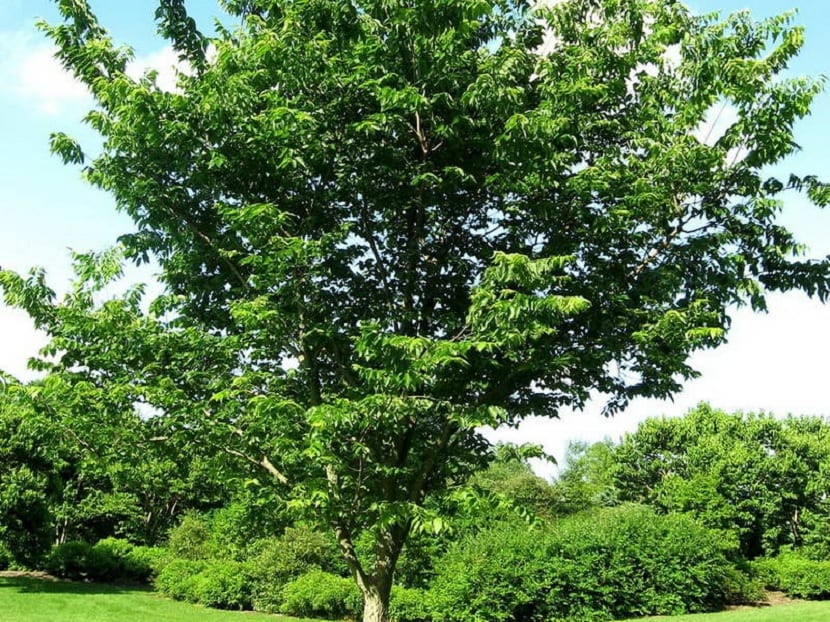
Today we are going to talk about two well-known and sustainable trees that belong to the genus Celts. The first is celtis australis and the second Celtis occidentalis. These two species of trees are used as ornamental trees for parks and gardens. Although generally slow growing, they are perfect for shade, good landscaping, and changing seasons.
In this article we are going to tell you all about the Celtis. If you want to learn about its care and characteristics, this is your post.
Features celtis australis
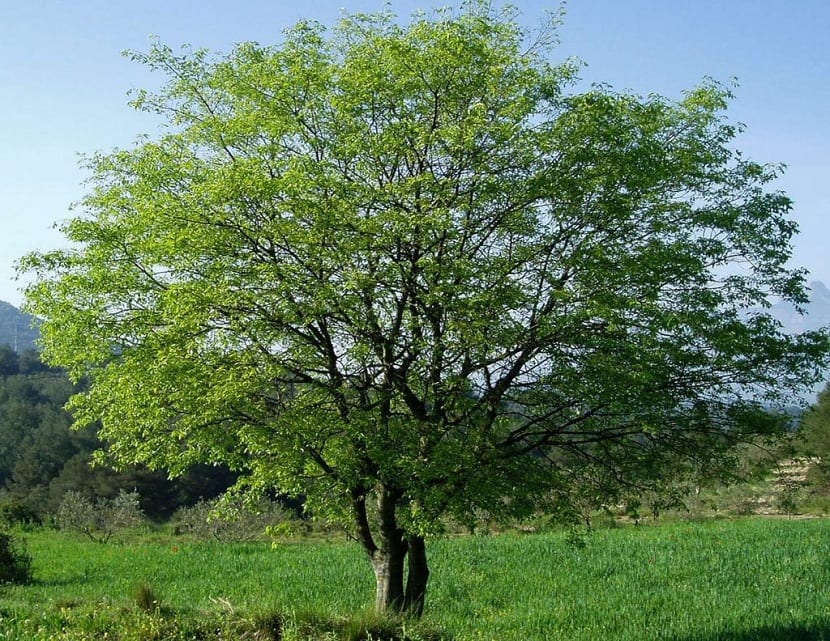
We are going to start by describing this species. It is a fairly robust, hard and sustainable tree. Does not usually have an excessively large size, but reaches 30 meters. It has Mediterranean origin and its growth is quite slow. Although this does not matter in terms of ornamentation, it is worth it once it is fully grown. You can enjoy a robust tree with plenty of shade and deciduous. This gives a plus since it changes the landscapes when the seasons of the year pass.
It has a gray, list-like bark. It is similar to that of the Ficus or the beech. It does not have any marked grooves or indentations. Its leaves are simple pinnate and rounded alternate type with a long petiole. They are dark green in color and have a rougher appearance on the upper surface and are lighter and hairier on the underside.
As for its flowers, they are greenish yellow. They are not very large and do not have petals. They are born with the leaves. Flowering begins in April and May. With this we have a typical plant that is collected in the teaching of children. A large, robust tree that has reddish deciduous leaves in autumn, loses them in winter and blooms in spring. It is an ideal tree to gradually modify the landscape and appreciate the changes of seasons in the cities.
Its fruits are edible drupes that are hanging from fairly long peduncles. In its maturation process it changes from green to reddish yellow and, finally, to black.. Fruiting takes place in autumn.
Description and uses
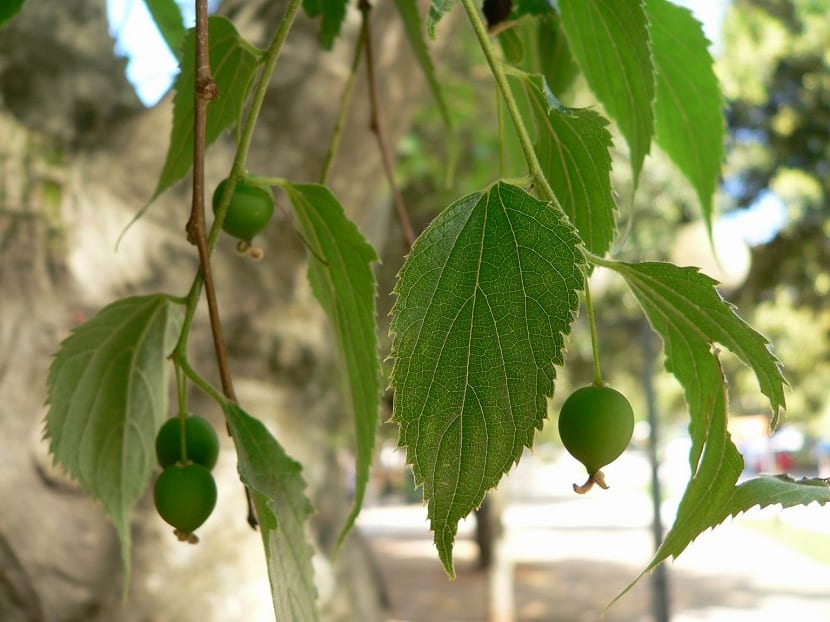
The trunk of this tree is hard, robust and forks with larger and ascending main branches from which other smaller and less spread twigs emerge. These twigs are sometimes almost dangling. The set of types of branches that it has make the tree have a wide and rounded crown.
It is a tree native to southern Europe, northern Africa and Asia Minor. In the Mediterranean area you can live in very good conditions. It generally extends from sea level to about 1.200 meters above sea level. You will not be able to find it forming forests, but in isolation. In Catalonia it is a tradition among peasants to plant one of these specimens when the heir of the family was born.
The fruits are called hackberry or hackberry. It has a sweet and pleasant flavor meat. These fruits were used in popular medicine and today they are vital for the conservation of the fauna of the places where it lives naturally.
Celtis wood has a very good quality and a lot of uses. In Catalonia it is used to manufacture pitchforks. It is a species capable of adapting to different types of soils, so it does not usually have many problems growing. It prefers cooler and slightly humid places, although it can handle dry days well. It is a long-lived tree, capable of living more than 500 years. Perfect for forming some groups but without actually forming a forest.
Very useful for ornamentation because it gives a lot of shade, despite having a slow growth, but it adapts to polluted environments and does not have parasites or diseases. Therefore, it is a tree recognized for the sustainability with which it can be dealt with.
Features celtis occidentalis
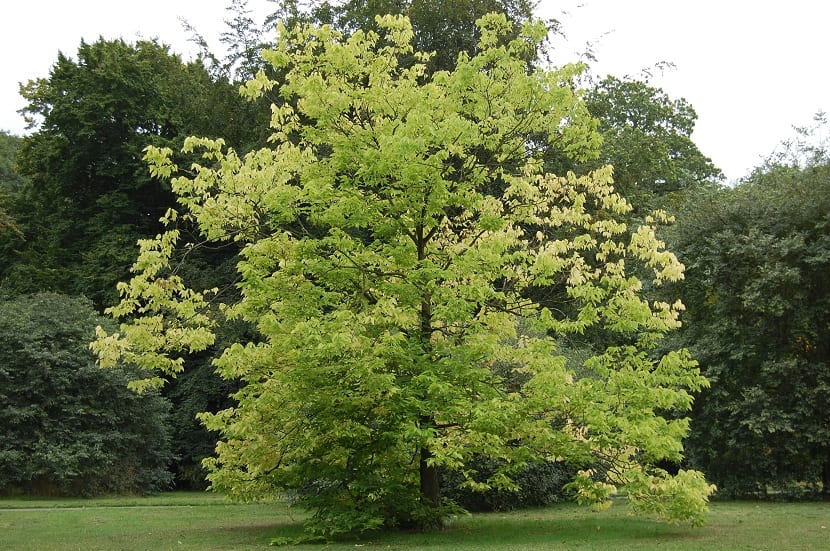
El celtis occidentalis it is commonly called North American hackberry in honor of its origin. It is used as a plant in urban and peri-urban areas and, unlike the previous one, it is able to reproduce more easily as a seed. It grows faster and can survive well in Mediterranean environments in a naturalized way. It is usually distributed between 150 meters of altitude and 1200 meters above sea level. It does not climb higher because it does not tolerate much longer cold or frost.
It occupies some varied habitats. It lives in dry, rocky areas, riparian forests, etc. It is a type of tree that prefers deep soils that are not too compacted. It is not very demanding in terms of the type of pH in which it develops. It can survive in both acidic and basic soils. Its adaptability helps it to colonize even the most unstable soils such as slopes, deposits on slopes, escarpments and gleams.
The advantage that this tree gives over the previous one is that it is a great soil former. By producing large amounts of leaves, it generates a lot of humus and this serves to feed the soil. He is smaller than his partner Celtis. It usually reaches 8 meters in height, although it has been seen with up to 15 meters. It has alternate type leaves with 3 nerves and asymmetric.
Its flowers are axillary and the fruit is also drupáceous. It has a very long petiole and is prized by animals. It is especially birds that help the propagation of this tree by consuming and dispersing the seeds of the fruit.
Where is it located
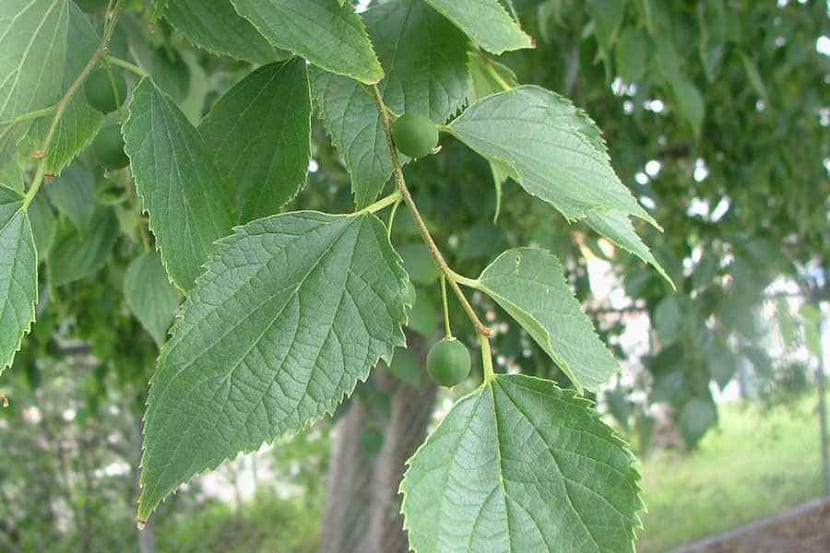
In our country we can find it in different environments or in different ways despite coming from North America. It can occupy open spaces as if it were a pioneer species. Like his partner Celtis, it cannot be found forming forests. Normally it is seen in isolation, dispersed or at most forming some groups.
In riverside environments, it is capable of creating formations of considerable size, as if it were a small forest. Especially it can be found like this in the east and south of the peninsula.
I hope that with this information you can learn more about the main species of the genus Celtis.